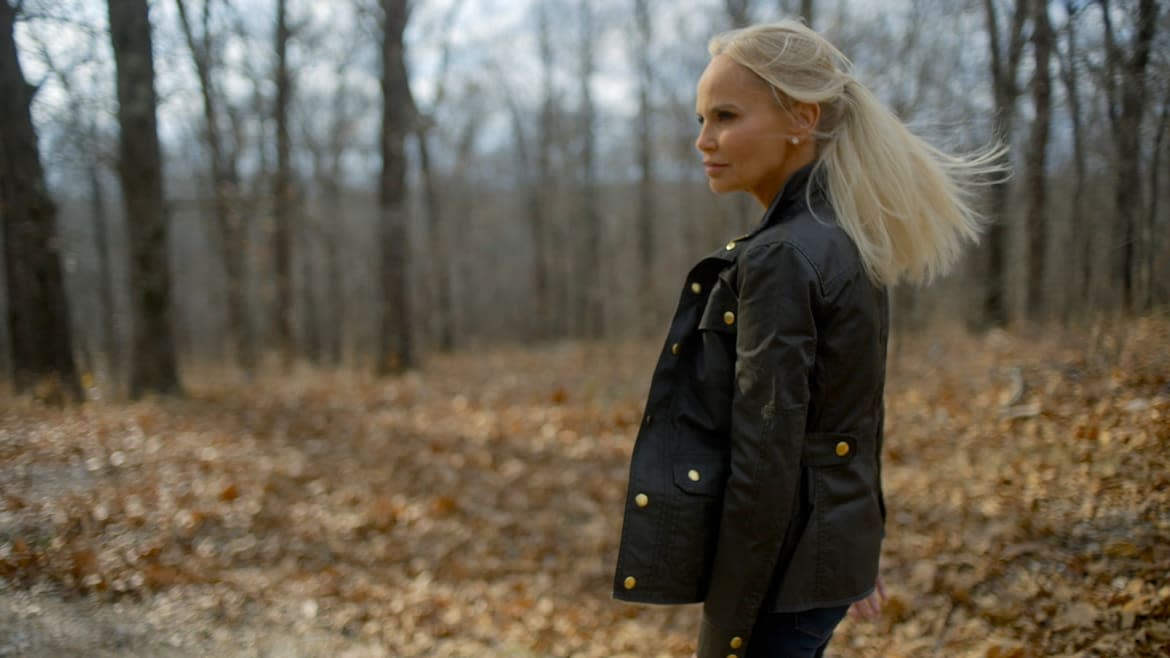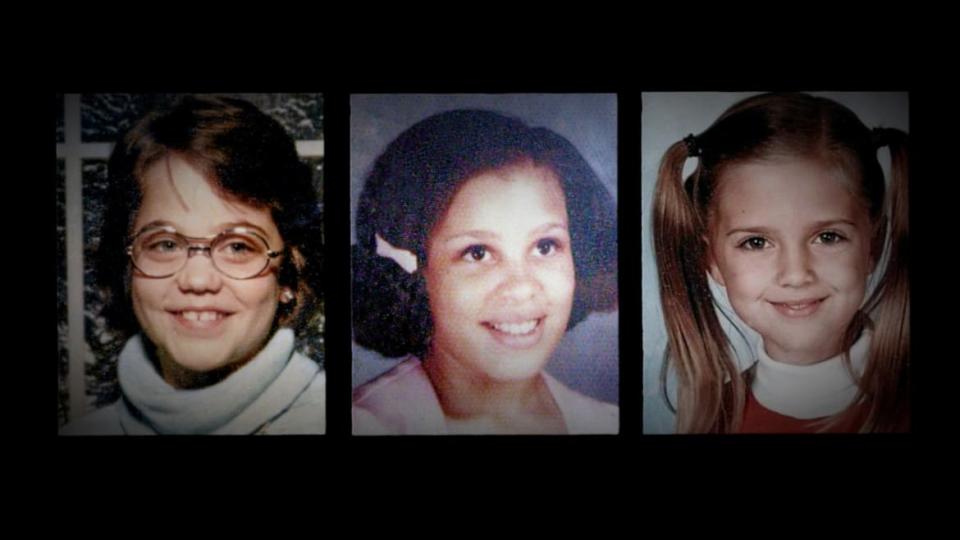Kristen Chenoweth Makes the Murder of Three Girl Scouts All About Her in ‘Keeper of the Ashes’

Kristin Chenoweth has absolutely nothing to do with the June 13, 1977, murders of three Oklahoma Girl Scouts—8-year-old Lori Lee Farmer, 9-year-old Michele Heather Guse and 10-year-old Denise Milner—except for the fact that she might have been with them that summer at Camp Scout if not for an illness. Nonetheless, the Wicked actress does her damnedest to make herself the center of Keeper of the Ashes, a four-part Hulu docuseries (out now) that routinely interjects its headliner into a story that doesn’t involve her in any meaningful way. Chenoweth’s presence is awkward to the point of tasteless, and it does much to undercut this true-crime affair, which is further undone by a dogged desire to distend its material to the breaking point.
Produced by ABC News Studios, Keeper of the Ashes is another non-fiction TV venture that could have been halved without suffering any appreciable loss, beginning with Chenoweth and extending to a bevy of melodramatic slow-motion sequences and various interviews that rehash the same token talking points in slightly different fashion. This is a shame, given that there’s a real mystery at the heart of director Remy Weber’s series: that of the 1977 slaying of Lori, Denise, and Michele, three girls who shared a bunk at Camp Scout. On the evening in question, a torrential storm sent all of the campers straight from the dining hall to their quarters. In the middle of the night, counselor Carla Wilhite heard strange noises nearby and checked them out, but she couldn’t determine their source. The next morning, however, she made a grisly discovery: at the foot of a tree lay Denise, who’d been raped and strangled. In sleeping bags beside her were Lori and Michele, both victims of a fatal bludgeoning.

Cops quickly descended on the scene, encountering a horror show the likes of which few had ever seen. The three girls had been brutalized both at the site where they were found and inside their cabin, which was covered in blood. Worse, there was little concrete evidence pointing detectives in any productive direction. The camp’s female counselors were ruled out as suspects, as were nearby neighbors, and a flashlight left behind by the perpetrator—its bulb covered by a taped-on garbage bag, save for a pinprick-sized hole—was difficult to trace. Shortly thereafter, though, Sheriff Pete Weaver and his men got a break when they investigated a collection of nearby mountainside caves, one of which was actually an abandoned cellar, and retrieved items that could be tied to a familiar face: Gene Leroy Hart.
As Keeper of the Ashes explains, at the time of this triple homicide, Hart—a Native American who was a member of the Cherokee Nation—had been on the run for years courtesy of his second escape from prison. Previously convicted of kidnapping two women, tying them to a forest tree, and repeatedly raping them before leaving them for dead, Hart was a deviant fiend. Moreover, his successful evasion of authorities had been a persistent thorn in Sheriff Weaver’s side. Despite a manhunt that involved upwards of 600 law enforcement officers and locals, Hart remained on the lam for 10 months following Lori, Denise and Michele’s demise, in the process earning himself a mythic reputation as some sort of shape-shifting supernatural being. Still, whatever powers or luck he possessed ran out courtesy of Oklahoma State Bureau of Investigations (OSBI) agent Harvey Pratt, who went undercover and got a lead on the fugitive’s whereabouts: a remote cabin where he was soon arrested.
Hart’s ensuing prosecution is referred to here as “O.J. before the O.J. trial,” due to both the media’s voracious coverage of the event and the way in which it split the community between those who thought Hart guilty and the many—both Native American and Caucasian—who had known him since his youthful days as a high school football star and staunchly believed in his innocence. Those unique dynamics, as well as Native Americans’ overarching sense that Hart was being railroaded by a racist system (and a sheriff who hated that Hart had humiliated him), are adequately addressed in Keeper of the Ashes. Yet unfortunately, what goes unexamined is how pro-Hart Oklahomans reconciled their defense of the man with his proven track record as a heinous sexual predator—a discrepancy that, even today, seems to baffle Lori Farmer’s mother Sheri.
Keeper of the Ashes is best when it fixates on the particulars of its core murder mystery or empathetically considers the unthinkable trauma suffered by the victims’ loved ones; while Michele’s family doesn’t appear, the parents of both Lori and Denise movingly articulate the depths of their loss as well as their frustration with the suspected killer’s widespread public support. Too often, though, director Weber resorts to corny devices to drum up suspense—including overcooked music, cheesy insert shots, and leaden going-to-commercial cliffhangers—or wastes time on threads that don’t go anywhere. Chief among those involves new Sheriff Mike Reed trying to come to a definitive conclusion about Hart’s guilt via new DNA analysis—a promising notion that never results in the sort of bombshell the series seeks.
Ultimately, none of those missteps are as egregious as Chenoweth’s own participation. The acclaimed actress waxes rhapsodic about her Oklahoma childhood, repeatedly states that she’s never shaken the memory of this infamous crime (and the idea that it could have been her!), and—in a diversion that has no connection to this true-crime narrative—visits the local Kristen Chenoweth Theater in order to speak with doting students. “This is a story I wish I never had to tell… but this story, it needs to be told,” she intones at one point, and the nagging question is: Why does Chenoweth think she’s the person to tell it? Whether walking through the now-derelict grounds of Camp Scout or kneeling beside the tree where the girls were found, Chenoweth comes across like an interloper in someone else’s tale. By the time she closes the final episode with a five-minute on-stage duet with a young fan, it’s clear she fancies herself—wrongly, ghoulishly—as the star of this tragic show.
Get the Daily Beast's biggest scoops and scandals delivered right to your inbox. Sign up now.
Stay informed and gain unlimited access to the Daily Beast's unmatched reporting. Subscribe now.

 Yahoo Movies
Yahoo Movies 
